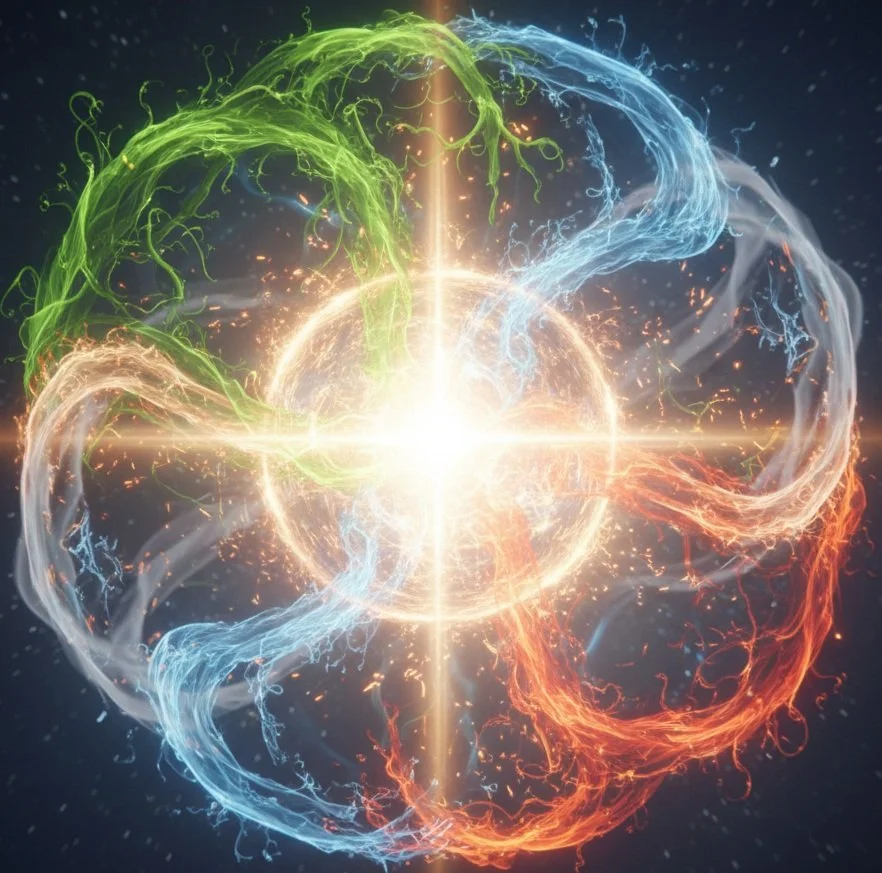The Woman at Midnight: Rage as Data in a Collapsed System
At the edge of my memory, there’s a woman awake at midnight, her body humming with rage and exhaustion. The house is quiet except for the sound of a child who won’t stay asleep. There are dishes in the sink, toys on the floor, a half-finished thought in a Word document that will never make it to page two. Her hands body is sore from a thankless day. Her heart is heavy with a question she can’t say out loud:
Why can’t I do this?
Every day, she wakes aching. Every day, she tells herself to be grateful. Every day, she feels herself failing a little more. Her body screams for rest, but rest doesn’t come, because the moment it does, another small body needs something, breaks something, screams something. And when she finally gets a breath, guilt fills the silence. The voices that say: “If you were good enough, loving enough, strong enough, you wouldn’t need rest.”
This isn’t a story about bad parenting or mental illness. It’s a story about systems—about what happens when the human system of care collapses.
The Myth of the Strong
We love to praise the “strong” caregiver. The one who sacrifices, who doesn’t complain, who makes it all look effortless. But strength, in this context, often means silence. It means performing calm while your nervous system is on fire. It means internalizing the impossible expectation that you can hold everyone else’s chaos without ever losing your own shape.
We treat caregiving like a virtue, not a job. We call it love, not labour. But the truth is, the domestic sphere runs on the unpaid, unseen work of these caregivers—often women—who are expected to absorb every failure of the system—to patch the holes in healthcare, in education, in family structure, with their own bodies. This unpaid labor is estimated to be worth trillions of dollars annually.
When that system breaks, we label the symptoms “postpartum depression,” “anxiety,” or “chronic illness.” But these aren’t defects, they’re signals; they’re what happens when the load exceeds the design.
A Human System Under Load
Every human system—biological, emotional, organizational—has limits. When too much demand moves through too little capacity, something burns out. The mother at midnight isn’t weak. She’s overclocked. Her body is doing what any system does when pushed beyond its design: screaming for recalibration.
Burnout isn’t a failure of resilience. It’s a failure of societal architecture, a lack of affordable childcare and eldercare, inadequate family leave, insufficient mental health resources, and rigid workplace expectations.
The Invisible Weight of Difference
Add neurodivergence to the equation—either in the child or the parent—and the whole system strains harder. The child who doesn’t respond to words the way other children do, the caregiver who processes every sound, every movement, every feeling like a storm they can’t turn off. The noise, the light, the guilt, the constant rupture of focus.
There’s no manual for this kind of living because society can’t afford to see it, measure it, plan for it. So, when caregivers break, they often break alone.
Caregivers, whether they identify as neurodivergent or not, often love with their whole nervous systems. They feel more, notice more, try harder… and then blame themselves when the weight becomes unbearable. They don’t fail because they’re too sensitive, they fail because supporting without support is unsustainable.
What the System Misses
We talk about “self-care” as if it’s a solution. I have to say THIS DRIVES ME CRAZY. It feels like a bandaid, brainless buy-in they are trying to sell the masses: no bubble bath fixes you when you’re working 24-hours a day with on not-enough money, sleep, or backup.
No amount of mindfulness amidst scented candles can offset structural neglect.
We don’t design systems that account for real human load.
We don’t value rest as productivity.
We don’t teach that the point of collapse is information not failure.
What looks like a breakdown is often a perfectly rational response to an impossible system.
The Rewrite
The woman at midnight didn’t die. She lived. She began to see that her rage wasn’t evidence of failure—it was data. It was the language of a body trying to tell the truth about its limits.
She learned to listen.
Over time, she built a different system—one that held her humanity instead of erasing it. She found language for what had been invisible. She learned that care, creativity, and rest are not luxuries—they are the infrastructure of survival.
Now, when she feels the pulse of burnout rising, she doesn’t ask what’s wrong with her. She asks what’s out of balance in the system around her.
And, to be clear, she does light candles, take long hot showers, and does not do any of this work perfectly. Self-care packaged as expensive gift baskets and panaceas are definitely bullshit, but small acts of kindness toward oneself are also one of the few things we have left in our circles of control—along with our thoughts, contributions, and acts of kindness toward others.
The Question
If burnout is what happens when human systems collapse, what would it take to build one that holds us—especially the caregivers—before they break?


























For decades, I lived inside a storm I couldn’t name. A restless mind. A body always braced. A heart that felt heavier than it should. I blamed myself. I blamed circumstances. I worked harder, tried harder, forced myself into routines that never stuck. I spent years believing I was simply too much and not enough at the same time.
Then, a diagnosis reframed everything.